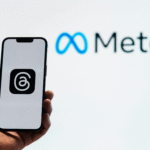Apple has announced that it will soon allow some of its watches in the United States to measure blood oxygen levels again. This feature will return through a software update after the company received approval from the U.S. government. The update comes after a long legal fight over the technology used for this health function.
The decision means that people using the Apple Watch Series 9, Series 10, and the Apple Watch Ultra 2 in the United States will soon be able to check their blood oxygen levels. However, there is a small change in how it will work. Instead of the watch showing the reading directly on its own, the watch will now send the information to a connected iPhone, where the results will be displayed.
Apple’s journey to bring back this feature has been complicated. For years, the company was involved in a dispute with Masimo Corporation, a medical technology company based in Irvine, California. Masimo is known for its work on pulse oximetry, a method used to measure oxygen levels in the blood. The disagreement began when Masimo accused Apple of taking its technology without permission. Masimo claimed that Apple hired some of its employees after the two companies had discussions about possibly working together. According to Masimo, Apple then used the company’s ideas and technology in its own watches.
The matter escalated in 2023 when Masimo won a ruling from the U.S. International Trade Commission (ITC). The ITC decided that Apple had violated Masimo’s patents. As a result, it ordered a ban on importing certain Apple Watch models that used the blood oxygen feature. This ruling affected Apple’s Series 9 and Ultra 2 watches.

The ban created major changes for Apple. The company had to quickly remove the blood oxygen function from these watches in the U.S. in order to keep selling them. For customers, this meant that even though the watches looked the same as those sold in other countries, they could not use the oxygen tracking tool.
However, Apple did not give up. After the ITC’s decision, the company convinced the Federal Circuit Court to pause the ban temporarily. This allowed Apple to resume sales for a short time. But the relief didn’t last long. The next month, the court reinstated the ban, and Apple was again forced to remove the feature from its watches in the United States.
The watch models affected by the Thursday announcement did not have the blood oxygen feature when they were sold to customers earlier this year. However, U.S. Customs has now approved Apple’s new approach, which involves shifting part of the feature’s function to the iPhone. Apple explained that with this update, a user will open the blood oxygen app on their watch to start a session. The sensors in the watch will then gather the necessary data, but instead of processing it directly, the information will be sent to the paired iPhone. The iPhone will then calculate the blood oxygen levels and display them on its screen.
This update is important because it allows Apple to bring back a popular health feature without violating the earlier court ruling. By moving the processing part to the iPhone, Apple seems to have found a way to work within the legal limits set by the patent dispute.
Apple first introduced the blood oxygen measurement function in 2020 with the Apple Watch Series 6. The feature, based on pulse oximetry, was promoted as a way to help users monitor their general wellness. It could also alert users to possible breathing issues. Two years later, in 2022, Masimo launched its own blood oxygen tracking device called the W1 watch. This device was focused more directly on medical use, given Masimo’s background in health technology.
The legal battle between Apple and Masimo has been intense. Masimo’s leaders argued that Apple’s version of the feature copied their patented methods. They said the technology behind the readings was the result of years of their own research. Apple, on the other hand, has maintained that it created its own version independently and did not steal Masimo’s technology.
Despite the approval from U.S. Customs for this new software update, the legal case between Apple and Masimo is still not fully resolved. The two companies have ongoing disputes in courts and regulatory bodies. Masimo did not immediately respond to requests for comment on Apple’s latest announcement.
For Apple Watch users in the United States, this update will be a welcome change. The blood oxygen tracking feature was one of the most talked-about health tools when it first arrived in 2020. Many people used it to monitor their fitness, track changes at high altitudes, or keep an eye on their breathing while sleeping. Losing the feature felt like a step backward for some customers. Now, with the new update, they will regain access to the readings, though in a slightly different way.
This development also shows how technology companies sometimes have to adjust their products due to legal or patent disputes. In this case, Apple had to find a workaround that allowed it to offer a similar experience without directly breaking the rules set by the courts. It’s a reminder that innovation in technology isn’t only about creating new features—it’s also about navigating the complex legal world that surrounds them.
Apple’s move to link the blood oxygen readings to the iPhone instead of processing them entirely on the watch is an example of creative problem-solving. While it might not be as convenient as seeing the results instantly on the watch screen, it still gives users access to the valuable health information they want.
It is not yet clear if this new approach will be accepted permanently or if Masimo will challenge it again. But for now, Apple has found a path to restore a feature that had been missing from its U.S. watches for months. The update will roll out soon, and users of the eligible models—Series 9, Series 10, and Ultra 2—will be able to take advantage of it once they install the latest software.
This situation has drawn attention not just from technology fans but also from people interested in medical devices. The combination of health and consumer technology is becoming more common, and the Apple-Masimo dispute shows both the opportunities and challenges of merging these worlds.
In the end, while the fight over patents may continue, Apple Watch users in the United States will soon see one important health tool return to their devices. For them, the change will mean better tracking of their well-being, more control over their health data, and a small but meaningful victory in the ongoing story of wearable technology.


